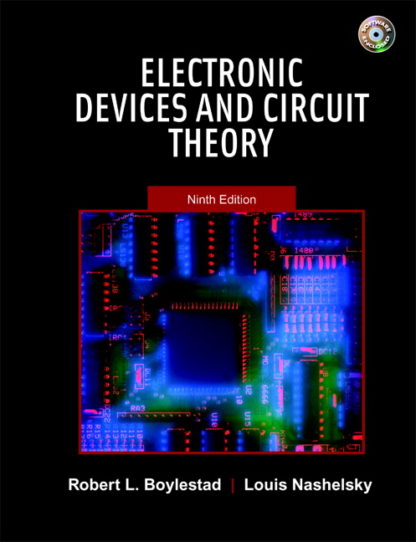Electronic Devices and Circuit Theory book is suggested for upper-level courses in Devices and Circuits at 2-year or 4-year Engineering and Technology Institutes. Highly accurate and thoroughly updated, this text has set the standard in electronic devices and circuit theory for over 25 years.

Boylestad and Nashelsky offer students a complete and comprehensive survey, focusing on all the essentials they will need to succeed on the job. This very readable presentation is supported by strong pedagogy and content that is ideal for new students in this rapidly changing field. Its colorful, student-friendly layout boasts a large number of stunning photographs. A broad range of auxiliary materials is available for instructor support.
- What is Transistor hFE? Current Gain in a Transistor
- Steps in Electrical Failure Analysis for High-Speed Communication
The Electronic Devices and Circuit Theory uses explanations and calculations in an organized way and doesn’t seem to have glossed over the details. The author doesn’t assume much prior knowledge beyond KVL/KCL stuff and even at one point briefly reviews Thevenin’s theorem.
The book starts with a very basic electronics device by introducing the PN junction diode, its derivatives, and its application. Going one step further, the author Boylestad explains Bipolar Junction Transistor (BJT) and Field Effect Transistor (FET). More emphasis is on the BJT and FET configurations, its biasing circuit, modeling, small-signal analysis, and frequency response. After BJT and FET, the book discusses the Operational Amplifier and Power Amplifier. Then, other two terminals and three-terminal devices, digital IC, power supply, and feedback system. Finally, the Electronic Device and Circuit Theory by Boylestad has an introduction to measuring instruments and signal generators.